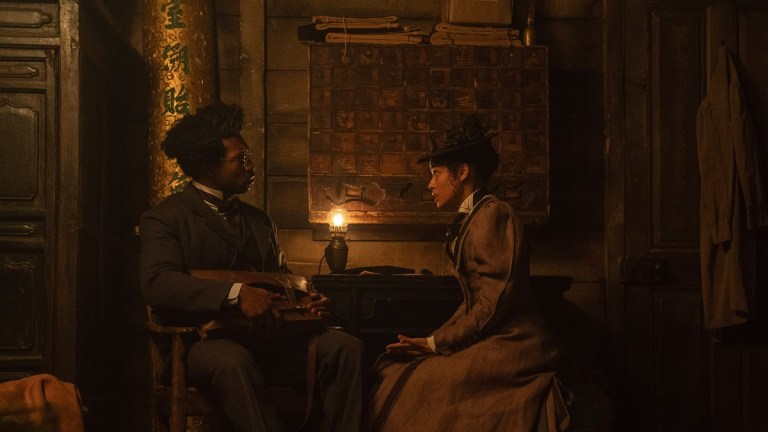Loki’s Big Change to Victor Timely’s Backstory Has Major Ramifications

This article contains spoilers for Loki season 2 episode 3
It doesn’t matter if you call him He Who Remains, Kang the Conqueror, or Victor Timely. The trans-dimensional being behind the TVA is a big deal. Not only is he slated to be the major baddie behind the current three-phase arc of the Marvel Cinematic Universe, but his comic book counterpart has connections to the most important team in the Marvel Universe.
But the latest episode of Loki‘s second season offers a quiet and potentially powerful revision to the future of the MCU. We learn that He Who Remains developed a safeguard to protect the TVA in the case of his death, which went into effect when Sylvie killed him at the end of season one. Miss Minutes and Ravonna Renslayer go back to 1868 Chicago and encounter a young He Who Remains, and the time travelers slip him a copy of the TVA handbook penned by Ouroboros, striking the ingenious lad with inspiration.
When we next meet He Who Will Remain When He Grows Up in 1893, he’s using the name Victor Timely and showing off an early version of the TVA’s loom to attendees of the World’s Fair. In short, Loki episode three establishes He Who Remains’ origin in the mid-19th century American Midwest. Granted, Loki, Ravonna, and Mobius refer to Timely as a “Variant,” which suggests that this might be just another version of He Who Remained Until He Didn’t, but given the “Sacred Timeline” chyron, we can safely assume that Timely is the Prime He.
It radically changes the comic book origin of Kang the Conqueror, who originally hails from the utopia of the 31st century. Disgusted with the peaceful ways of his society, Kang travels to an apocalyptic future to recruit a team of ruffians and then goes to ancient Egypt to become the emperor Rama-Tut. He later takes the name Kang the Conqueror and spends his time mostly getting beat by the Avengers, eventually taking alternate identities, such as Scarlet Centurion, Victor Timely, and Immortus.
On one hand, shifting HWR’s origin to the past instead of the future isn’t a big deal. In fact, it provides a refreshing take on the expected future shenanigans common to genre fiction. No, the bigger deal is the suggestion that Victor Timely is Kang’s prime identity. Because in the comics, Kang is Nathanial Richards, son of the time traveler Nathanial Richards and half-brother to Reed Richards aka Mr. Fantastic of the Fantastic Four.
If you only know the Fantastic Four from their lackluster cinematic appearances, then you might be forgiven for thinking that this change isn’t a big deal. But in the comics, the Fantastic Four are the center of the Marvel Universe. Not only did the success of the Jack Kirby and Stan Lee comics lead to the launch of other Marvel heroes, including Spider-Man, the Avengers, and the X-Men, but Marvel introduced some of its most compelling figures through Fantastic Four comics, such as Galactus, Black Panther, and the Silver Surfer.
The integration of the Fantastic Four into the MCU is a big deal, which is why the team’s first movie in the universe has been given a privileged position in the Multiverse Saga. They are the medium through which the Marvel Universe grows and changes.
The introduction of Kang into the Marvel Universe seemed like another way to underscore the importance of the Fantastic Four and build up the team’s struggle going into Avengers: The Kang Dynasty and Avengers: Secret Wars, with the two movies slated to end the Multiverse Saga. But with He Who Remains At Some Point in the Future now reimagined as just some kid from Chicago, it becomes clear that Kevin Feige and Co. may have different plans for Marvel’s first family.
